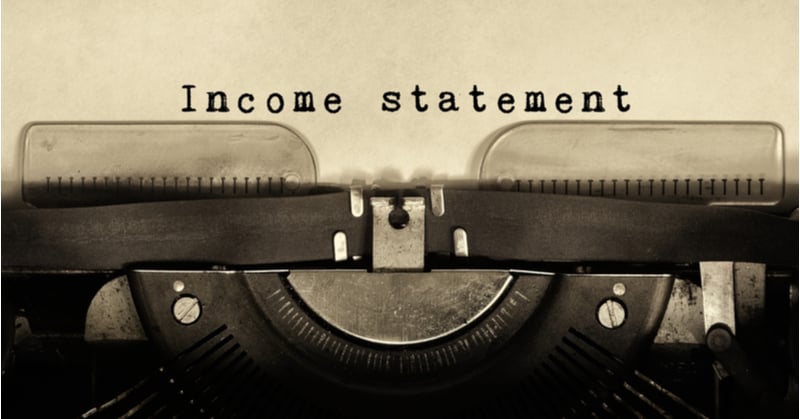Yesterday I was assured by several different professionals that clients still hand in a “shoebox” full of receipts to their accountant or bookkeeper to untangle. I was shocked that this still happened, especially as the explosion of accounting software platforms and integrated apps is occurring. But I am happy to see that accountants and bookkeepers can still charge for cleaning up those messes!
Then I started thinking. If a business owner is still throwing their receipts into a shoebox, how are they keeping up with their business? How do they know if they are doing either good or bad?
Accountants and bookkeepers - talk to your clients about their financials.
My guess is that many business owners manage their business by their bank statements.
Yes, the word statement is in the title, but the bank statement isn’t exactly the type of financial statement you can use to see the status of your business. The bank statement is great for reconciling transactions, but beyond that, it just tells you if you are having a good or bad day. Do you have money or not?
For business owners like this, it might be necessary to adjust your advisory services from forward-thinking analysis of their financials to some basic education. That premise is the foundation of this short series of articles I've wanted to write on how to explain financial statements in the language of the average business owner.
What is the purpose of the income statement?
Let’s start with the most basic financial statement and the one that most people can understand intuitively – the income statement (aka profit and loss or P&L). The purpose of the income statement is to tell the financial story of the business’ activities. That’s it. It is the report card for the business and is limited to a specific period. And like the bank statement, the income statement is just going to tell you if you had a good or bad period, like a month, quarter or year. Did I make money or not?
If a business owner understands the purpose of the income statement, the next steps are a lot easier. Besides recording how much their company sold or spent, the income statement also organizes the information in a way that helps the business owner instantly spot problems and analyze performance. Additionally, for business owners who tend to be a little more financially sophisticated, the information can be used to create a business plan.
Here are 3 things that any business owner can do with the income statement.
1 Organize - Add accounts to organize income streams and expenses to help you instantly recall where the money came from and where it went.
2. Analyze - Compare your plan (budget) to your actual performance. When analyzing budget versus actual, I like to start at the high level and just look at Sales, Gross Profit, Operating Expense, and Net Profit. When I see a discrepancy in one of these main categories, I dig into the detail to see where I can make adjustments. For instance, if I had planned to earn $10,000 in gross profit and I didn’t, I can look at cost of goods sold to see what led to the problem. In another example, if I planned to spend $1,000 in marketing but I spent $1,400 instead, then I know to cut some of my marketing expense if I’m making my sales totals.
Notice that I used dollars in my examples and not percentages. If you want to get a business owner's attention, convert the percentages to dollars to help them “feel the pain.”
3. Plan – This step is the one I get most excited about. When your client can start using the income statement to plan, create “what if” scenarios, and look toward the future, you have a client who is focused on success.
To build my plan I first built an income statement for three scenarios. I then compare and contrast each of the three income statements and create the most likely scenario to use for operations. Here are the three scenarios I look at:
- My current company goals for the year ahead
- My company’s best performance for each month
- The industry average for my company. This helps level set my expectations. You should always be average at a minimum! Why plan to be worse than average? It’s like studying to get a D on a test.
Your clients need to learn how to read their income statements and then use them. Why?
Teaching clients to read financial statements sets the foundation for advisory services engagements.
Making sure your clients understand that the income statement is used to organize, analyze, and plan is critical to setting the foundation for advisory services engagements with them. If you are working with a client who is still new to working with financial statements, follow these rules.
1. KISS – Keep it super simple. Even though their particular income statement might have 50 accounts and another 50 sub-accounts, collapse the view initially as you look at it. Keep the income statement review at a high level and compare it to your plan (budget). Don’t analyze detailed views until you both agree that there is an issue at a high level.
2. Focus on relationships – I love this rule because it has a double meaning. By keeping your instruction at a high level, you can teach how COGS impacts Gross Profit. You can also show how Gross Profit and Operating Expenses work together to create Net Profit.
The interactions between the numbers will help them understand how their actions affect the income statement. Also, when you bring the level of conversation down to simple concepts, you avoid the potential of talking over the head of your client and making them feel incompetent. You strengthen the relationship when you speak to them at their level of financial knowledge.
3. It’s only a tool – The income statement is just a way for your client to see how their income streams are performing, and if they need to make some adjustments. Here is a sub-rule to follow: if gross profit is dropping, then cut operating expense by the same amount to maintain the same amount of profit.
I hope some of you just checked my math on that one!
What other statements should you talk about with your clients?
In the next article in the series, you will learn how to talk to your clients about the Balance Sheet. Don't miss out on this valuable information; subscribe to The Woodard Report today.
Learn more about cash flow management as a service.
Managing cash is the lifeblood for every business, regardless of the business stage. Your clients NEED you to help them with cash flow management. Cash flow management is an entry-level coaching service you can add to your existing bookkeeping clients. This is a high-value service for both you and your clients; you can generate hundreds of dollars each month per client and up to $1,000 each month for your larger clients while your clients maximize profits.
Want to learn how to do this? I can teach you how in a one-day class. Learn more here about the Cash Flow Management Power Day. You will be able to choose either the January 20 or the March 7 Power Day class.
.png?width=150&height=63&name=TWRlogo-regmark_blueblack%20(1).png)
.png)










Do you have questions about this article? Email us and let us know > info@woodard.com
Comments: